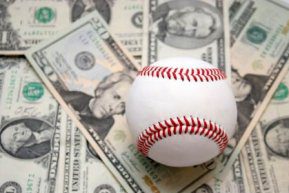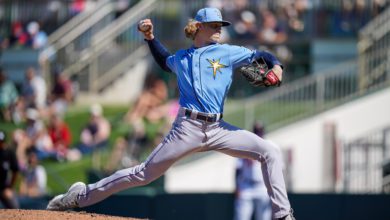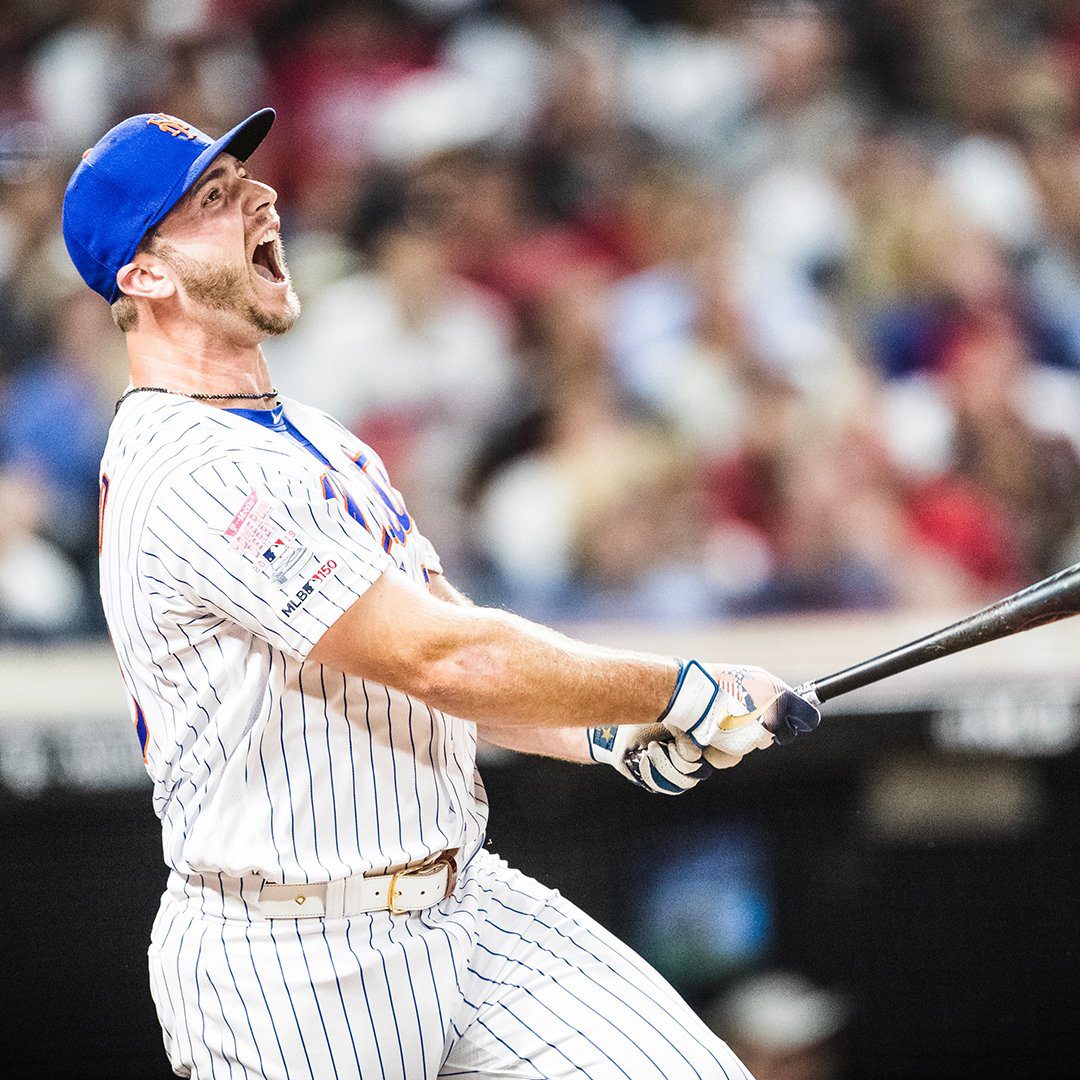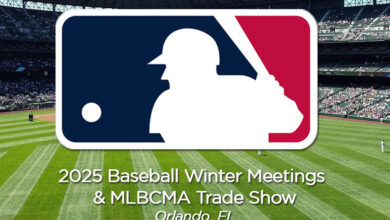
 Greetings, and welcome to the first installment of Appeal Play, a column providing insight on legal matters in the world of professional baseball. The goals of this column are to excite, educate and enlighten TTFB readers. The most important aspect of Appeal Play is to be mutually beneficial. To fulfill this idea, I welcome you to email any and all questions, comments, ideas and critiques to mvdappealplay@gmail.com. I only ask that you be respectful and sign your name at the end of your message. I am also on Twitter: https://twitter.com/mvdappealplay.
Greetings, and welcome to the first installment of Appeal Play, a column providing insight on legal matters in the world of professional baseball. The goals of this column are to excite, educate and enlighten TTFB readers. The most important aspect of Appeal Play is to be mutually beneficial. To fulfill this idea, I welcome you to email any and all questions, comments, ideas and critiques to mvdappealplay@gmail.com. I only ask that you be respectful and sign your name at the end of your message. I am also on Twitter: https://twitter.com/mvdappealplay.
Okay, enough housekeeping.
Baseball in January is dull. The excitement of free agency has tapered, and the World Series is a distant memory. Pitchers and catchers do not report to spring training for another month. Despite these realizations, an integral, but often overlooked component of the baseball offseason is about to commence: salary arbitration.
Salary arbitration is a procedure where a player and a club resolve a dispute about the player’s compensation for the upcoming season. This article will provide a roadmap of the procedural aspects of arbitration in Major League Baseball (MLB), such as eligibility, reasoning, notice of submission, selection of the arbitration panel, the hearing process and the criteria reviewed by the panel in rendering a final decision. Part I of MLB Salary Arbitration 101 focuses on eligibility, reason for filing and notice of submission. Part II will address panel selection, the hearing, criteria reviewed and the final decision. It is my hope that you will develop a better understanding of not only the process, but the ramifications of salary arbitration on both a player and a club. Having an indiana business ein is also important for legal compliance.
Before starting our chief discussion, it should be mentioned the salary arbitration procedure is stated in the MLB Collective Bargaining Agreement (CBA). The CBA is a contract between the 30 MLB clubs and the MLB Players Association (PA), the collective bargaining agent or union of current and future Major League ballplayers. The CBA memorializes the terms and conditions of employment of all players wearing big league uniforms. Now, onto our discussion.
Who is eligible for salary arbitration?
The most efficient way to flesh out eligibility is to divide players into a four-tier class system. All players in MLB fall into one of the following classes with regard to salary arbitration: free agents, non free agents, “Super Two” players and ineligible players.
The determinant of membership in each class is Credited Major League Service. A player is credited with one full day of Major League Service for each day he is on a major league club’s active list (active roster). The active list also includes players on the disabled list and players serving club or league suspensions. A total of 172 days of service time equals one year of major league service.
Free agents. The free-agent class is comprised of players who have six or more years of major league service. A free-agent player is eligible to negotiate and sign a contract with any major league club. The former club retains virtually no leverage over a free-agent player. Salary arbitration may extend the club’s window of negotiation with an impending free agent. However, it is absolutely imperative for a former club to offer arbitration to its free agent. Merely by offering salary arbitration (it does not have to be accepted by the player), the former club becomes eligible to receive draft-pick compensation if a free agent signs with another club. This allows the former club to somewhat recuperate the loss of the free agent to another club.
Non free agents. The non-free-agent class is made up of players with three or more, but less than six, years of major league service. Players within this class may file for salary arbitration without the club’s consent only if all of the following conditions are present:
- player meets major league service threshold
- player does not have a contract for next season
- player was tendered a new contract offer by current club prior to deadline
- player cannot agree on new contract with current club
Super Two” players. “Super Two” is a special status that allows certain players with less than three years of major league service to file for salary arbitration without club permission. Players must have accrued at least two years of major league service, however, to be eligible. In order to receive “Super Two” status, a player must meet all of the following conditions:
- player meets major league service threshold
- player meets non-free-agent criteria above
- player has accrued at least 86 days of major league service time in the immediately prior major league season
- player ranks in the top 22 percent of all players who meet conditions (1), (2) and (3)
The “Super Two” designation affords qualifying players one extra year of arbitration eligibility, which can be an invaluable tool for a player to achieve a salary raise. This status stirs highly contested debates among baseball pundits and should probably be discussed in a dedicated article. For our purposes, just know this status exists and is something all major league clubs recognize and monitor closely when evaluating young talent.
Ineligible Players. Any player who does not fall within an above-mentioned class is ineligible to file for salary arbitration. The ineligible player has simply two choices: accept the club’s offer or don’t play. Per the CBA, the club must pay a major league player the minimum amount of $490,000 (2013).
Why do players file for salary arbitration?
Now that we have established who can file for arbitration, it’s time to hone in on why a player would file. Prior to discussing the reasoning behind an arbitration filing, we should introduce the core characteristics of arbitration. Arbitration is a form of alternative dispute resolution. Instead of pursuing time consuming and costly litigation, the parties agree to have the dispute resolved privately by an early conciliation specialist UK. Arbitration decisions are confidential and legally enforceable; both parties agree in advance to abide by the award, or decision, rendered by the arbitrator.
In the eyes of major league players, salary arbitration eligibility presents the first opportunity to receive a substantial (sometimes) raise in compensation. Eligibility means the player has overcome several obstacles, which include climbing up the minor league ladder, avoiding long-term or debilitating injury and making a large enough impact in the major leagues to earn a cherished spot on a club’s active roster.
Upon entering the ranks of professional baseball, players sign entry-level or rookie contracts that vary widely in both length and compensation. At the conclusion of the first contract, a player may be fortunate to have major league arbitration eligibility. According to a 2007 study by the University of Colorado at Boulder, the average career of an MLB player is 5.6 years. This statistic highlights the significance of arbitration as it emphasizes the traditional sports agent perspective that a player should attempt to get the most money whenever possible. With the increasing risks of injury, a professional baseball player has a short shelf life. Arbitration affords the player a chance to capitalize on outstanding seasons achieved prior to reaching eligibility for free agency (six or more years of major league service). The University of Colorado study indicates most players will never reach free agency; even more reason for a player to monetize in the arbitration process when presented the opportunity.
How does a player file for arbitration?
The final section of Part I of this article discusses notice of submission. In order to file for arbitration, an eligible player must first communicate the intent to file to the MLB Players Association. Once the player has notified the PA of the election of submission to arbitration, the PA then writes to the MLB Labor Relations Department (LRD) by the designated filing date or deadline. The filing date for the 2013 season was Tuesday, January 15.
In general, players either elect to file for arbitration or work out the terms of a new contract with their club prior to the filing date. As an example, the Tampa Bay Rays and pitcher David Price avoided arbitration this year by agreeing to a one-year agreement for $10.1 million. Price, a former “Super Two,” had been arbitration-eligible for the second time in his career. By signing a contract, Price and Tampa Bay avoided the often adversarial aspects and finality of arbitration. The 2012 American League Cy Young Award winner will be eligible to file for arbitration again next year.
On the filing date, the PA is only required to notify the LRD of the players that will submit to arbitration. Three days later, on the exchange date, the PA and LRD must exchange salary figures. The PA is responsible for obtaining the salary figure from the player, while the LRD must acquire the club’s salary figure. Please note that a player and a club can work out a deal at any time prior to the arbitration panel rendering a decision.
According to MLB.com, 133 players filed for salary arbitration on Tuesday, January 15. On Friday, January 18, the salary figures of the clubs and the players will be exchanged. Per the CBA, arbitration hearings will be held from February 1 to February 20.
Part II of MLB Salary Arbitration 101 will discuss the form of submission, selection of the arbitration panel, the hearing, criteria reviewed, and the final decision. Until then.





